Do you want EASY vegetables to grow in buckets?
Do you want a garden, but don’t have the time, energy, or money for it?
Based on personal experience, scientific studies, and extensive research, I have created a list of 20 EASY Vegetables to Grow in Buckets for Beginners.
[toc]
The goal of this article is to provide you with the EASIEST Vegetables to Grow.
Also, I am providing the necessary instructions on how to select the correct supplies, planting, caring, harvesting tips, and answers to frequently answered questions.
20 EASY Vegetables to Grow in Buckets
1. Spinach
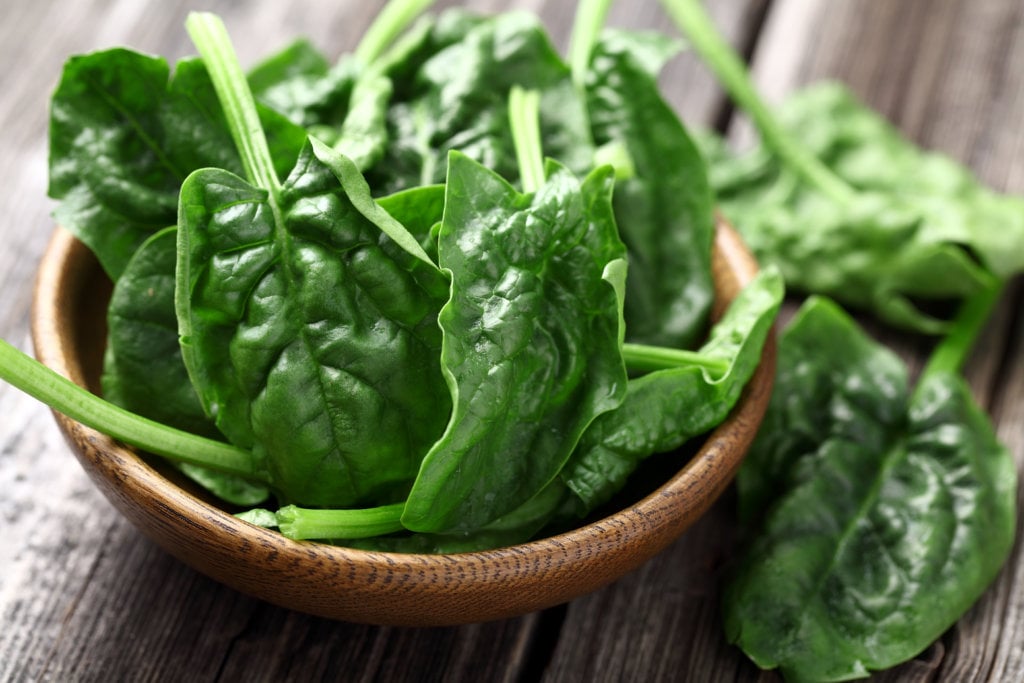
Spinach is a nutritious vegetable that is grown in both cold and warm weather. It contains high amounts of vitamin B6, B9, C, and Folic Acid.
You can plant it as early as spring and as late as early fall.
You can use it in salads, meat and fish dishes, and even eat it by itself.
- Container Size: 5-gallon window box
- When to Plant: Immediately after last spring frost. A second planting in Early Fall
- How to Grow it: Plant 4-6 inches deep. Plant 6-8 inches apart.
- Watering Needs: Water Immediately after planting and then twice a week for 15 seconds.
- Where to place it: Partial-Sun
- Life Cycle: Annual Plant
- When to Harvest: Slowly pick 30 days after planting
2. Lettuce
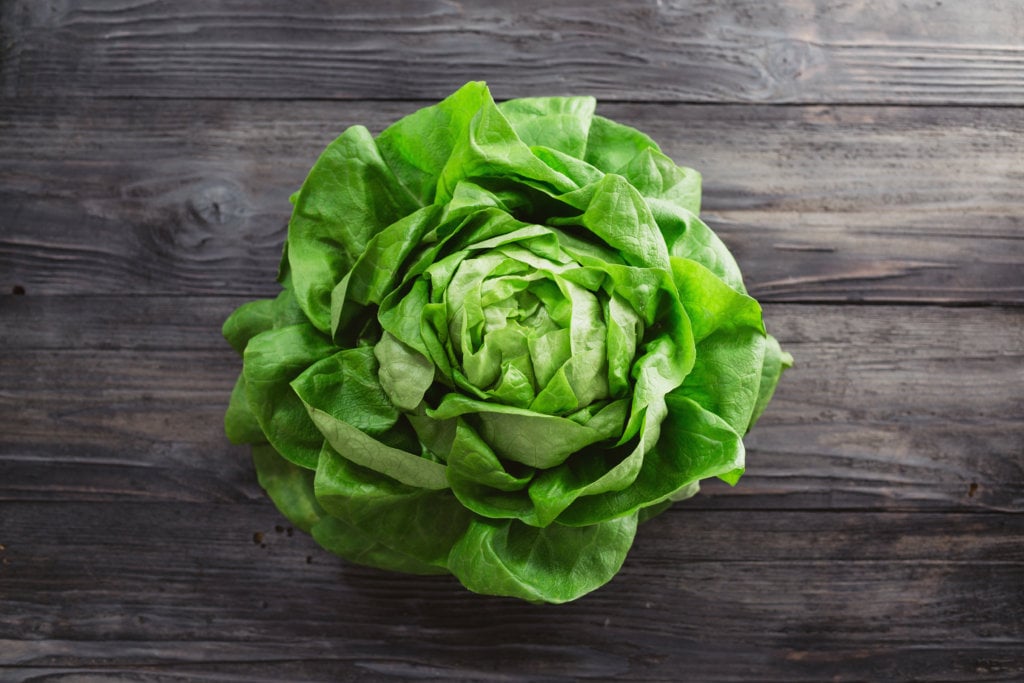
Lettuce is another nutritious plant that is cold hardy and can flourish in warm weather. It is high in fiber and manganese.
You can plant it immediately after your last frost. You can also plant it throughout the summer and early fall.
Lettuce is great in salads, on sandwiches, or paired with meat and poultry.
- Container Size: 5-gallon window box
- When to Plant: Immediately after last spring frost. A second planting in Early Fall
- How to Grow it: Plant 4-6 inches deep. Plant 6-8 inches apart.
- Watering Needs: Water Immediately after planting and then twice a week for 15 seconds.
- Where to place it: Partial-Sun
- Life Cycle: Annual Plant
- When to Harvest: Slowly pick 30 days after planting
3. Asian Greens
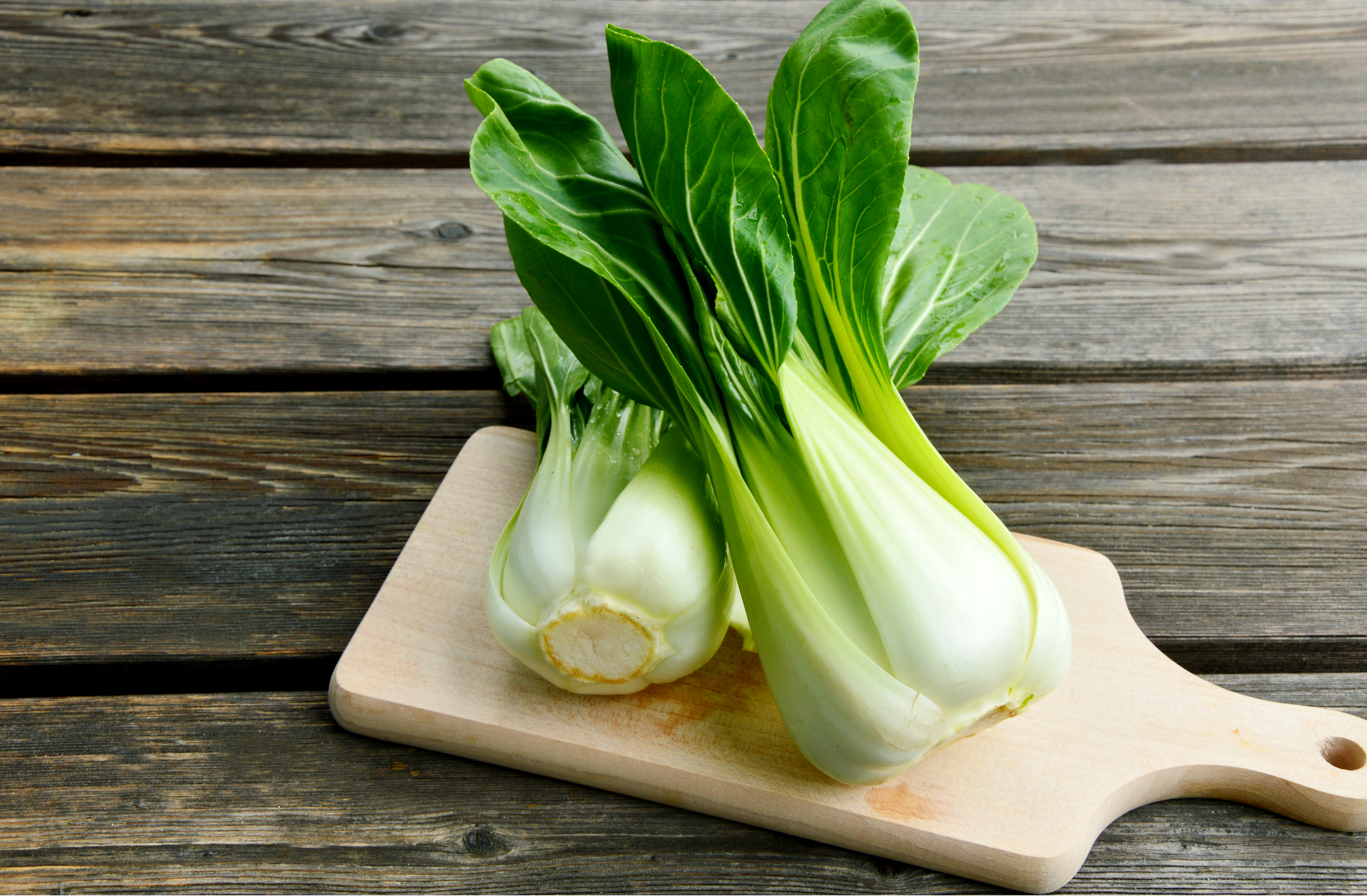
Asian greens are one of the most nutritious foods on this list. And best of all, they can be grown at any time of the year. Asian greens contain vitamins A, B, C, E, and K.
As with lettuce and spinach, Asian greens are great in salad, paired with meat and poultry, and cooked on its own.
- Container Size: 5-gallon window box
- When to Plant: Immediately after last spring frost. A second planting in Early Fall
- How to Grow it: Plant 6 inches deep. Plant 8-10 inches apart.
- Watering Needs: Water Immediately after planting and then twice a week for 15 seconds.
- Where to place it: Partial-Sun
- Life Cycle: Annual Plant
- When to Harvest: Slowly pick 45 days after planting
4. Onions
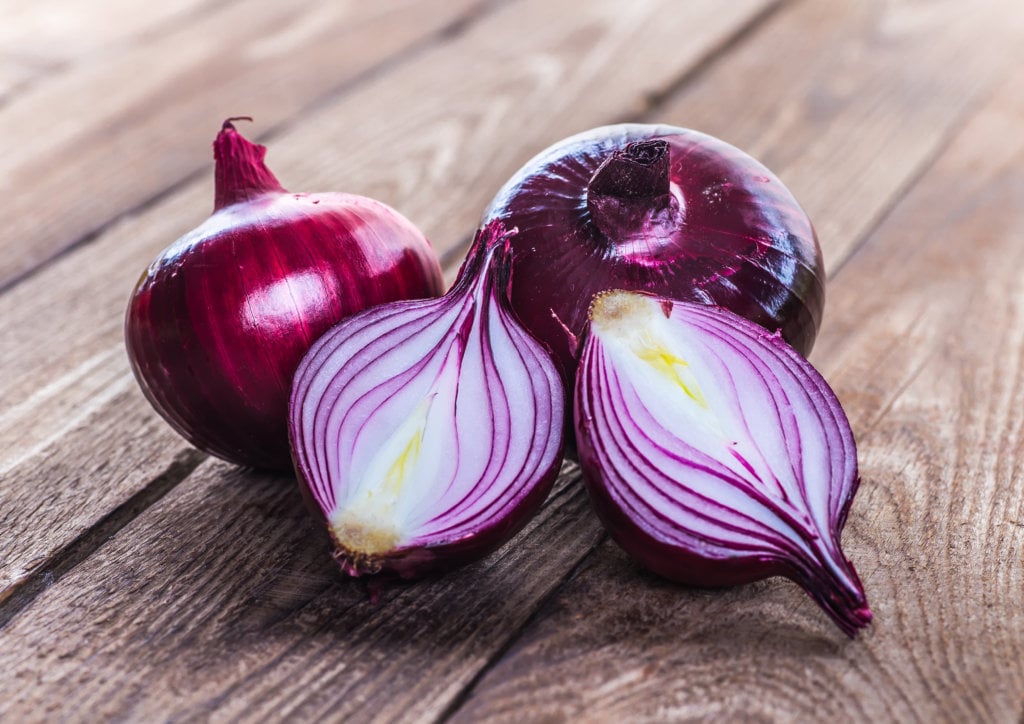
Onions are the perfect vegetable for fiber, folic acid, and vitamin C.
They are a great cold weather vegetable that typically can only be planted in the spring.
They can be eaten raw, have on sandwiches, or added to a stir fry.
- Container Size: 5-gallon bucket
- When to Plant: Immediately after last spring frost.
- How to Grow it: Plant 6 inches deep. Plant 6 inches apart.
- Watering Needs: Water Immediately after planting and then once a week for 15 seconds.
- Where to place it: Full-Sun
- Life Cycle: Annual Plant
- When to Harvest: Slowly pick 90 days after planting
5. Green Onions
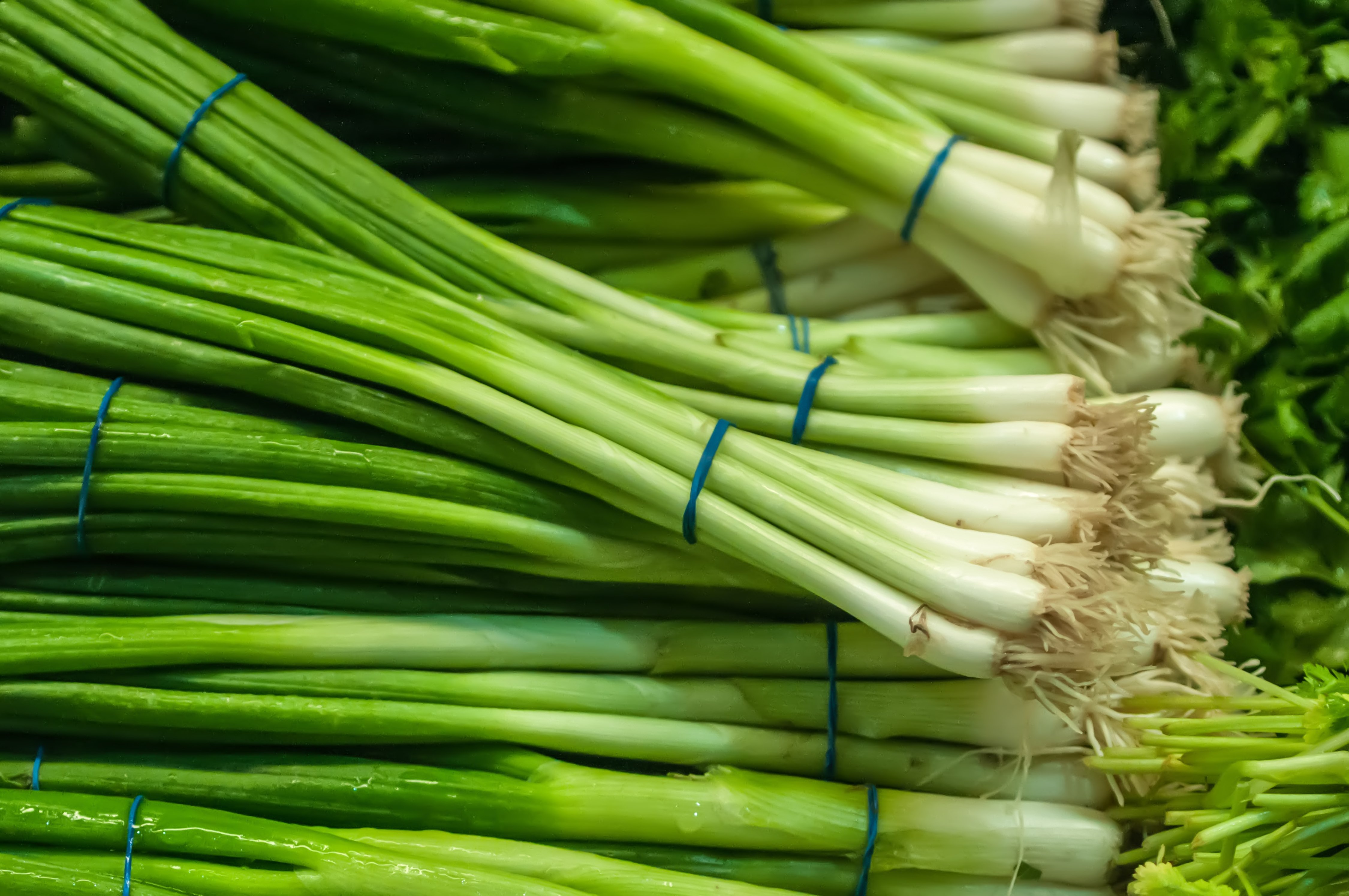
Green Onions are a great source of Vitamins A, C, & K. In addition, it is a good source of Folic acid and Riboflavin.
Green Onions is another cold hardy plant that can be planted immediately after the last spring frost.
This vegetable can be used in taboule, vegetable dishes, and meat and poultry dishes.
- Container Size: 5-gallon bucket
- When to Plant: Immediately after last spring frost.
- How to Grow it: Plant 3 inches deep. Plant 6 inches apart.
- Watering Needs: Water Immediately after planting and then once a week for 15 seconds.
- Where to place it: Full-Sun
- Life Cycle: Perennial Plant
- When to Harvest: Slowly pick 90 days after planting
6. Radishes
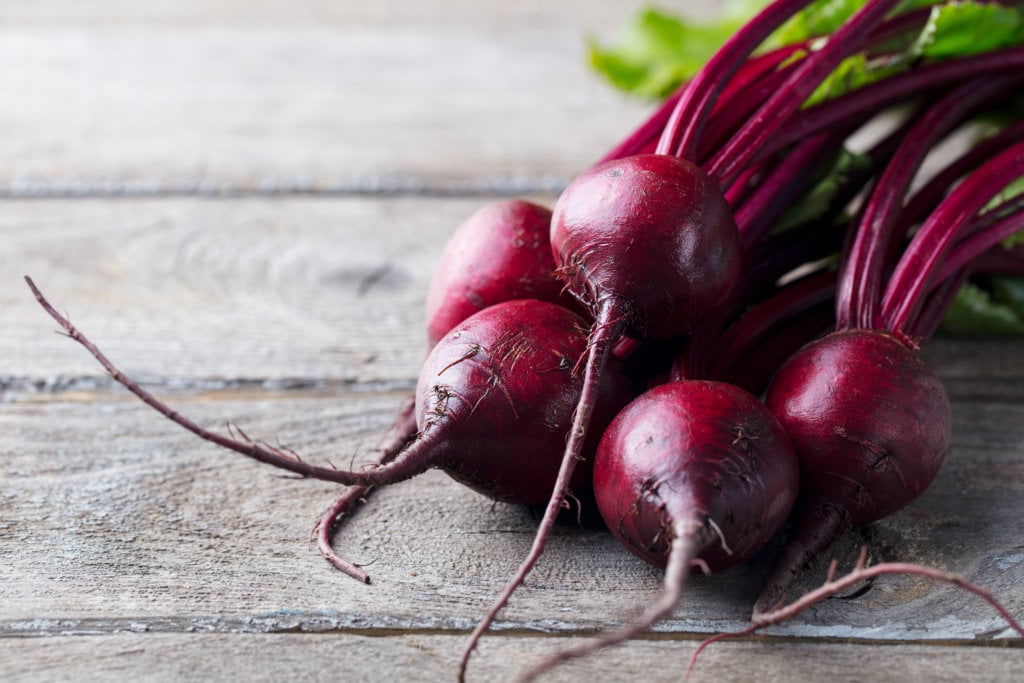
Radishes provide a great source of Vitamin C, Folate, and Potassium. It is one of the many easy vegetables to grow in buckets.
Radishes are another cold hardy vegetable that can be grown in early spring and again in late summer.
This vegetable is great to pair with cheese, chicken, or in a vegetable salad.
- Container Size: 5-gallon bucket
- When to Plant: Immediately after last spring frost and again in late summer (mid-July)
- How to Grow it: Plant 6 inches deep. Plant 6 inches apart.
- Watering Needs: Water Immediately after planting and then once a week for 15 seconds.
- Where to place it: Partial-Sun
- Life Cycle: Annual Plant
- When to Harvest: Slowly pick 90 days after planting
7. Asparagus

Asparagus is one of my favorite perennial vegetables to grow in a pot. It is a great source of vitamin A, C, E, and K. It also folate, copper, and iron.
Asparagus can be planted immediately after the last spring frost.
The majority of consumers cook and eat Asparagus with butter as a side dish to their entree.
- Container Size: 5-gallon window box.
- When to Plant: Immediately after last spring frost
- How to Grow it: Plant 3-4 inches deep. Plant 3-6 inches apart.
- Watering Needs: Water Immediately after planting and then once a week for 15 seconds.
- Where to place it: Partial-Sun
- Life Cycle: Perennial Plant
- When to Harvest: Slowly pick 90 days after planting
8. Artichokes
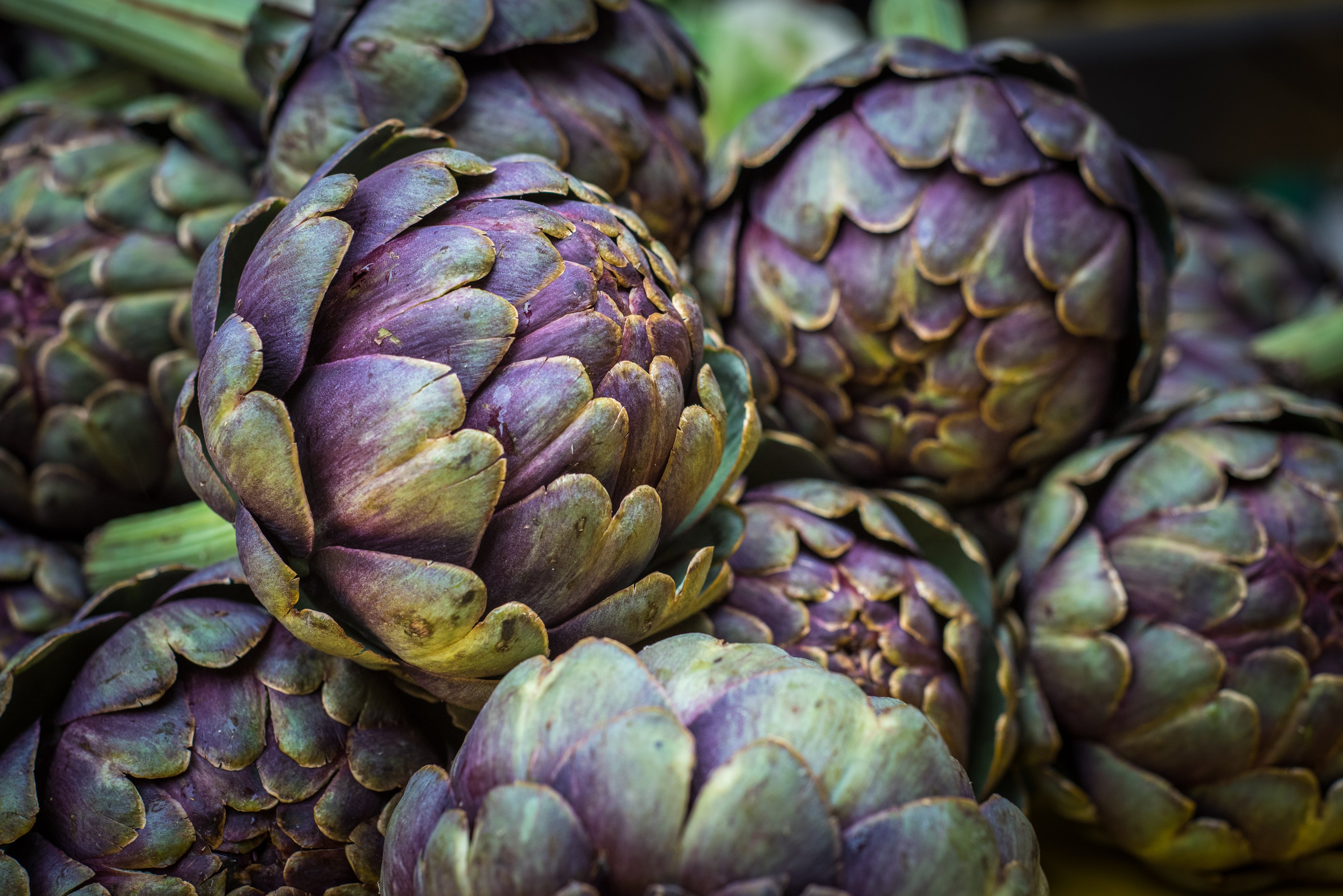
Artichokes are another great perennial plant that has a strong source of vitamins C, K, and Folate.
This is another vegetable you want to plant after the last spring frost and will come up every year.
Artichokes are a great vegetable that can be added warm and cold vegetable and entree dishes.
- Container Size: 5-gallon window box.
- When to Plant: Immediately after last spring frost
- How to Grow it: Plant 4-6 inches deep. Plant 6 inches apart.
- Watering Needs: Water Immediately after planting and then twice a week for 15 seconds.
- Where to place it: Partial-Sun
- Life Cycle: Perennial Plant
- When to Harvest: Slowly pick 90 days after planting
9. Peppers
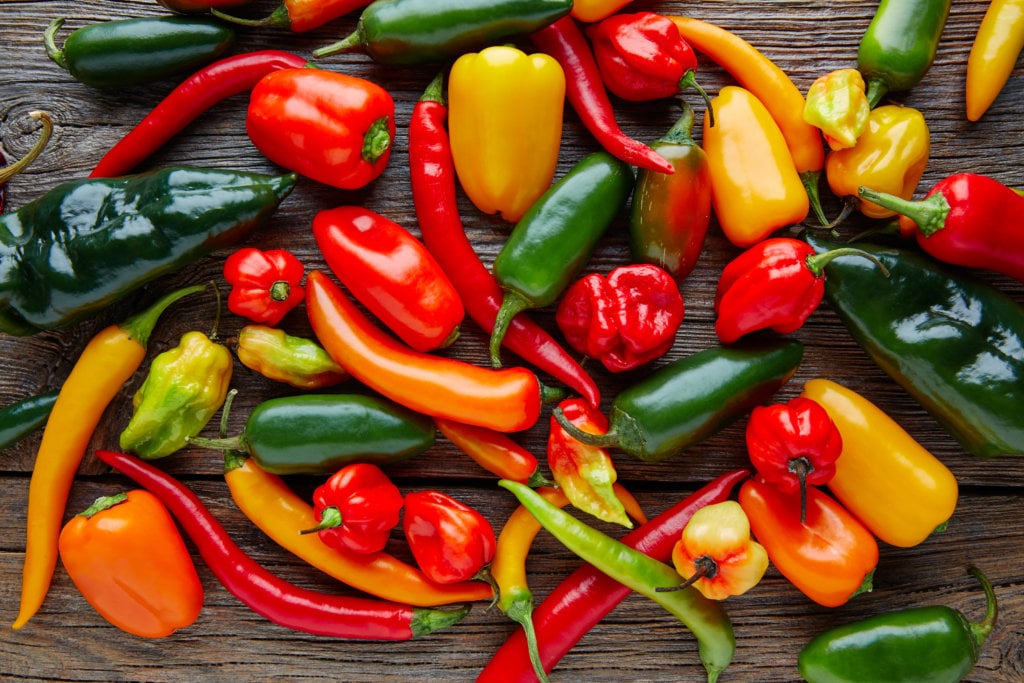
Peppers are my favorite vegetable. They are a great source of iron and vitamin C.
Peppers must be planted one month after your last spring frost. Any sign of frost or cold weather will kill your peppers.
Peppers have many uses. They are used in pasta dishes, stuffed with sausage, and added to salads.
- Container Size: 5-gallon bucket.
- When to Plant: One month after last spring frost
- How to Grow it: Plant 6-8 inches deep. Plant 12-14 inches apart.
- Watering Needs: Water Immediately after planting and then two to three times a week for 15 seconds.
- Where to place it: Full-Sun
- Life Cycle: Annual Plant
- When to Harvest: Slowly pick 90 days after planting
10. Tomatoes

Tomatoes were recently voted the most popular vegetable in the United States. They are rich in vitamin C, potassium, and folate. This is one of the surprisingly easy vegetables to grow in buckets.
Tomatoes should be planted one month after the last spring frost. Any sign of cold weather or frost will kill the plant.
Tomatoes can be made into paste and sauces, added to salads, and vegetable dishes.
It should be noted that I recommend only planting cherry and grape tomatoes in buckets. Other tomatoes will take too much work and care to make it on this list.
- Container Size: 5-gallon bucket.
- When to Plant: One month after last spring frost
- How to Grow it: Plant 8-10 inches deep. Plant 14 inches apart.
- Watering Needs: Water Immediately after planting and then two to three times a week for 15 seconds.
- Where to place it: Full-Sun
- Life Cycle: Annual Plant
- When to Harvest: Slowly pick 90 days after planting
11. Chard
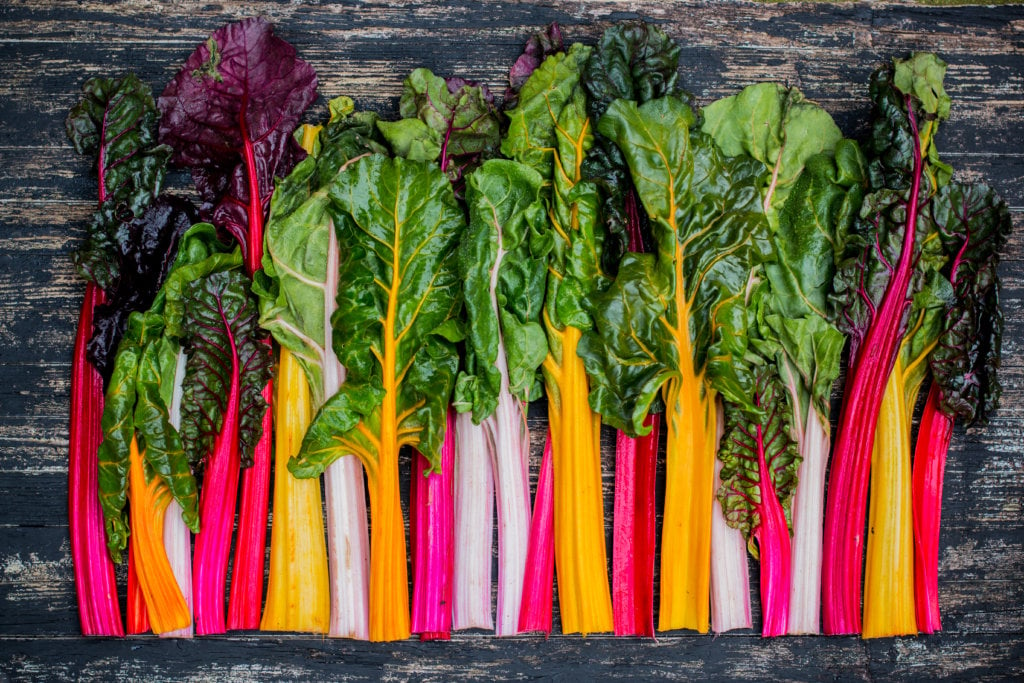
Swiss chard is one of the least known, but most beneficial vegetables. This vegetable is rich in vitamin c, folic acid, iron, and potassium.
Swiss Chard is a cold hardy plant that can be planted in early spring and again in the summer.
This vegetable is used in fish dishes, salads, and or even eaten raw.
- Container Size: 5-gallon buckets.
- When to Plant: Immediately after the last frost and in early summer.
- How to Grow it: Plant 4-6 inches deep. Plant 6 inches apart.
- Watering Needs: Water immediately after planting and then two to three times a week for 15 seconds.
- Where to place it: Partial-Sun
- Life Cycle: Annual Plant
- When to Harvest: Slowly pick 60 days after planting
12. Kohlrabi
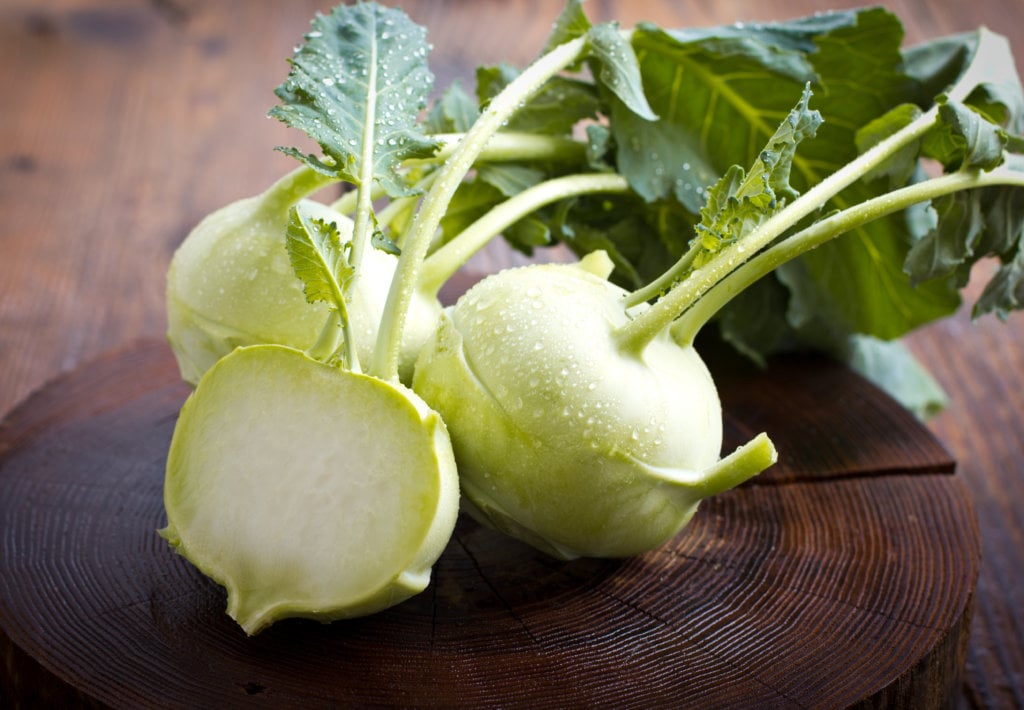
Kohlrabi is becoming an increasingly popular vegetable in the United States. It is a high source of Thiamin, Folate, Magnesium, and Phosphorous.
Kohlrabi can be planted immediately after the last frost and again in early summer.
This vegetable cooks with olive oil and other herbs. It serves well as a side dish.
- Container Size: 5-gallon buckets.
- When to Plant: Immediately after the last frost and again in early summer.
- How to Grow it: Plant 6 inches deep. Plant 6-8 inches apart.
- Watering Needs: Water Immediately after planting and then two to three times a week for 15 seconds.
- Where to place it: Partial-Sun
- Life Cycle: Annual Plant
- When to Harvest: Slowly pick 60 days after planting
13. Carrots
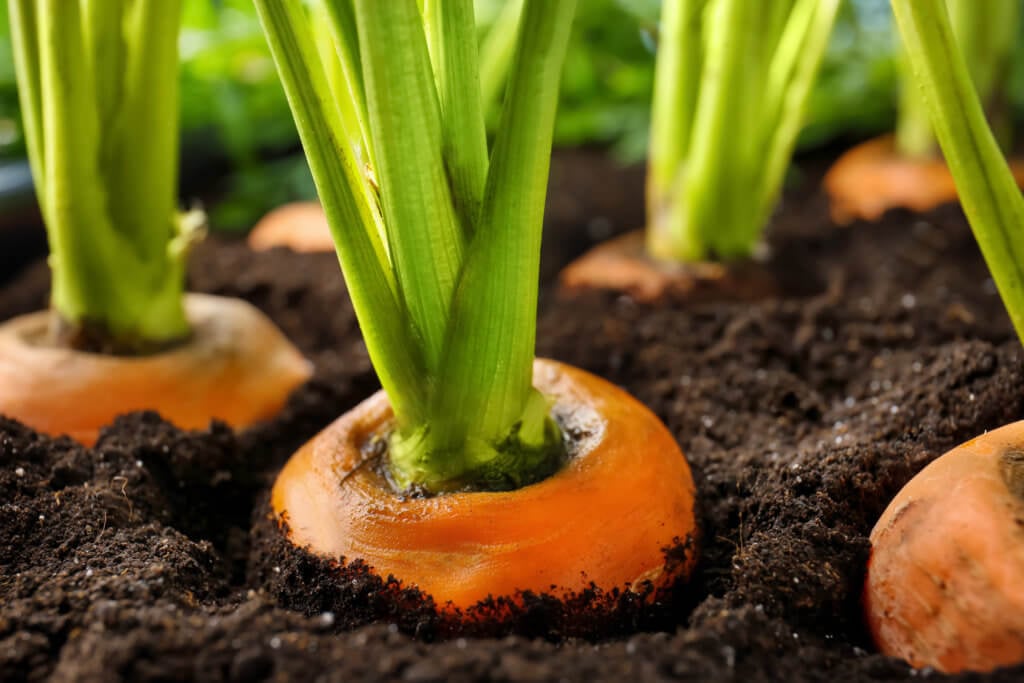
If you follow my instructions carrots are incredibly easy to grow. And they are a great source of vitamin A, K, and potassium.
Typically, you will plant carrots one month after the last spring frost.
Carrots are eaten raw, cooked, in soups, and in meat dishes.
- Container Size: 5-gallon window box
- When to Plant: One month after the last frost.
- How to Grow it: Plant 4-6 inches deep. Plant 3-4 inches apart.
- Watering Needs: Water Immediately after planting and then two to three times a week for 15 seconds.
- Where to place it: Full-Sun
- Life Cycle: Annual Plant
- When to Harvest: Slowly pick 100 days after planting
14. Broccoli

Broccoli is another fantastic vegetable for gardeners. It is a great source of protein, thiamin, and vitamin E.
Broccoli is a cold hardy plant that can be planted immediately after the last frost.
Broccoli is best served cooked with olive oil or cheese but also can be eaten raw.
- Container Size: 5-gallon window box
- When to Plant: Immediately after the last frost
- How to Grow it: Plant 6-8 inches deep. Plant 12 inches apart.
- Watering Needs: Water Immediately after planting and then two to three times a week for 15 seconds.
- Where to place it: Partial-Sun
- Life Cycle: Annual Plant
- When to Harvest: Slowly pick 90 days after planting
15. Beets
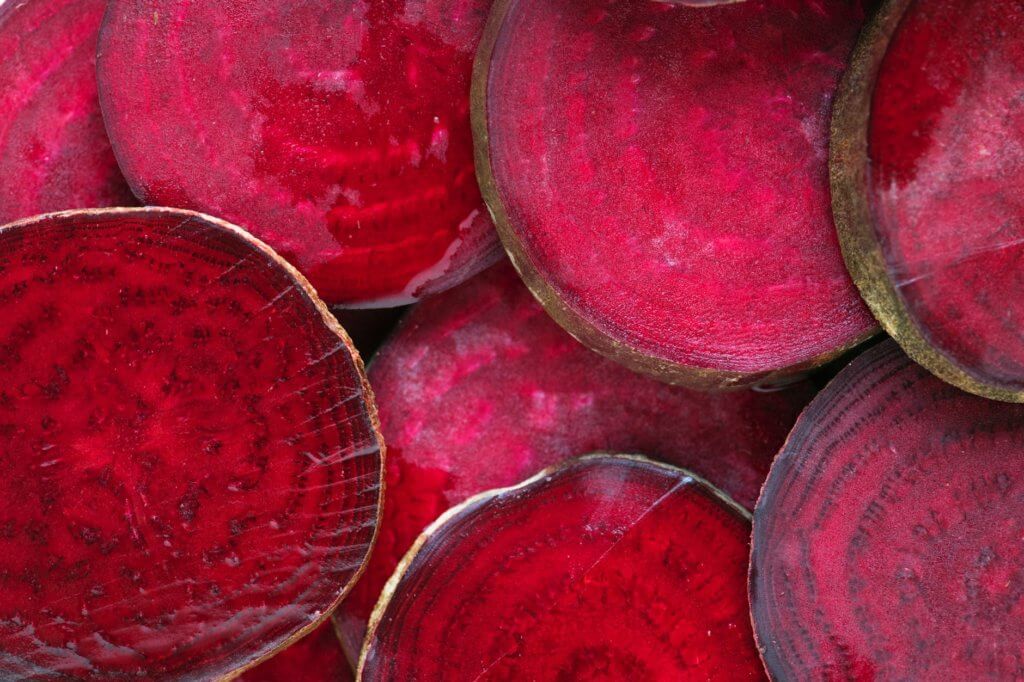
Beets may not be a favored plant among gardeners, but it is high in nutrients. It is an excellent source of fiber, folate, potassium, and vitamin C.
Beets can be planted immediately after the last spring frost and again in early summer.
Beets can be eaten raw. They can be pickled. And they can be served in many cooked vegetable dishes.
- Container Size: 5-gallon window box
- When to Plant: Immediately after the last frost
- How to Grow it: Plant 6-8 inches deep. Plant 6 inches apart.
- Watering Needs: Water Immediately after planting and then two to three times a week for 15 seconds.
- Where to place it: Partial-Sun
- Life Cycle: Annual Plant
- When to Harvest: Slowly pick 90 days after planting
16. Kale
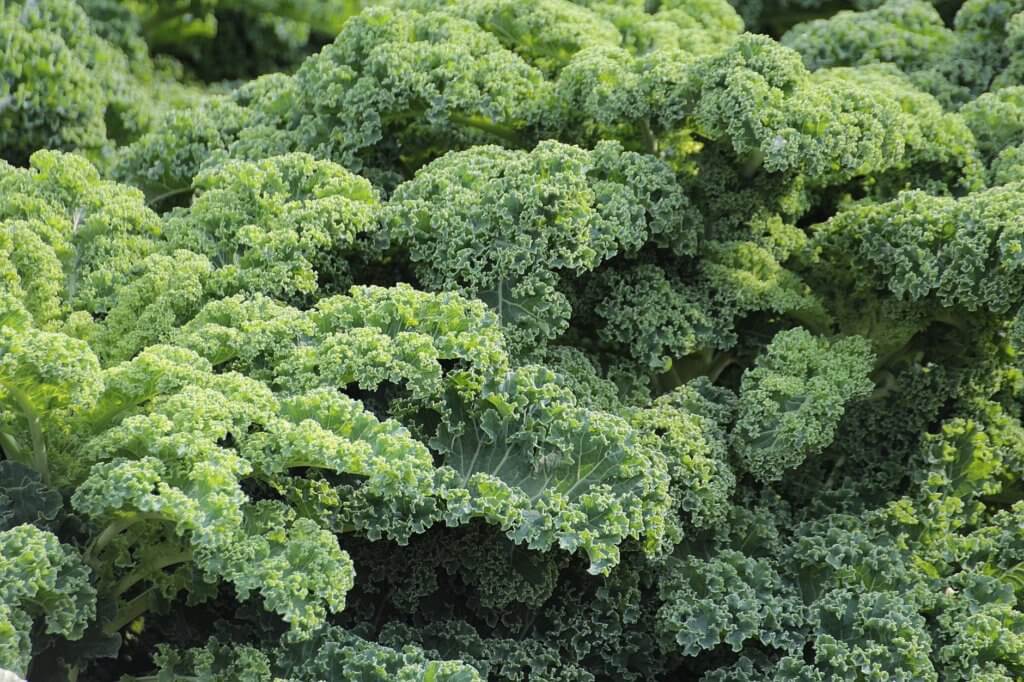
Kale has fastly become one of the most popular vegetables in the world. This vegetable has fiber, protein, almost every vitamin, and iron.
Kale is a cold hardy vegetable that is planted immediately after the last spring frost and again in early summer.
This vegetable is used in salads, smoothies, and entree dishes.
- Container Size: 5-gallon window box
- When to Plant: Immediately after the last frost
- How to Grow it: Plant 6 inches deep. Plant 6 inches apart.
- Watering Needs: Water Immediately after planting and then two to three times a week for 15 seconds.
- Where to place it: Partial-Sun
- Life Cycle: Annual Plant
- When to Harvest: Slowly pick 90 days after planting
17. Eggplant

Eggplants are one of the most hearty vegetables on this list. They are a rich source of fiber, potassium, and vitamin C.
They should be planted at least a month after the last spring frost.
This type of vegetable is great for pasta dishes and as a side for entrees.
- Container Size: 5-gallon buckets
- When to Plant: One month after the last frost
- How to Grow it: Plant 6-8 inches deep. Plant 12 inches apart.
- Watering Needs: Water Immediately after planting and then two to three times a week for 15 seconds.
- Where to place it: Full-Sun
- Life Cycle: Annual Plant
- When to Harvest: Slowly pick 90 days after planting
18. Green Beans
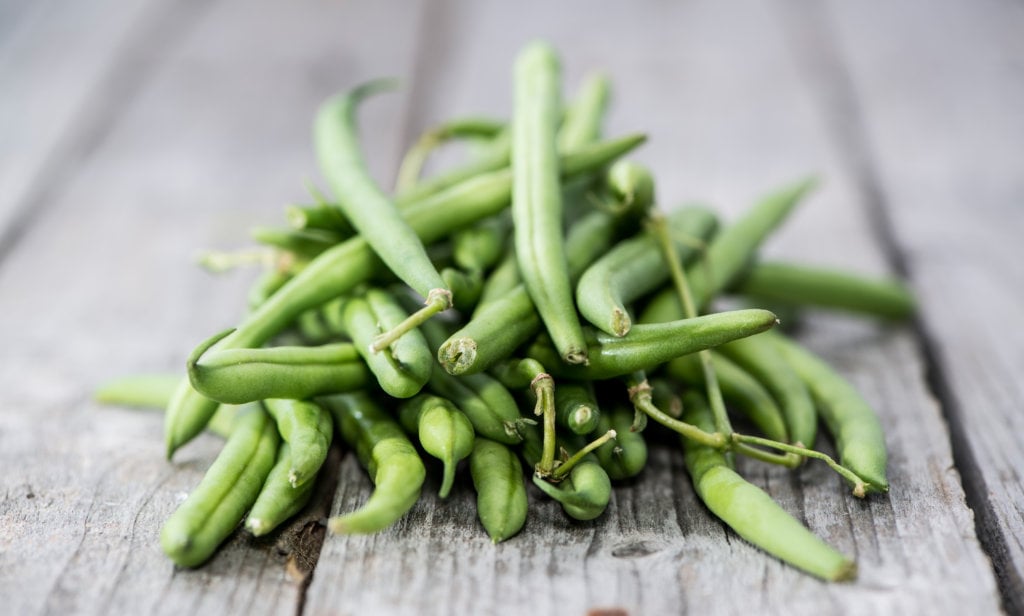
While there are many beans out there, green beans are the best for buckets. Green beans are a high source of folate, fiber, and potassium.
This vegetable should be planted 1 month after the last spring frost and again in early summer.
Typically, green beans are served as a side dish to pasta and other entrees.
- Container Size: 5-gallon window box
- When to Plant: One month after the last frost and again in early summer
- How to Grow it: Plant 3 inches deep. Plant 3-4 inches apart.
- Watering Needs: Water Immediately after planting and then two to three times a week for 15 seconds.
- Where to place it: Full-Sun
- Life Cycle: Annual Plant
- When to Harvest: Slowly pick 60 days after planting
19. Sweet Peas
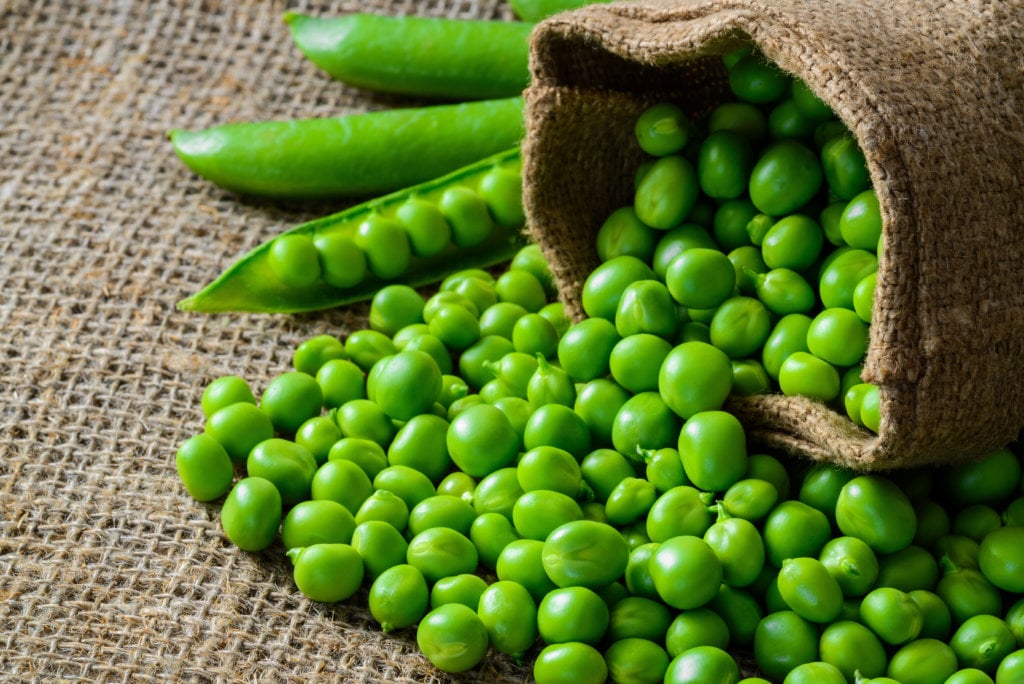
How delicious are sweet peas? They are also very nutritious. These vegetables are a high source of protein, riboflavin, and niacin.
Typically, you plant sweet peas about one month after the last frost and again in early summer.
Sweet Peas can be eaten raw right off the plant or cooked and served as a side dish to entrees.
- Container Size: 5-gallon window box
- When to Plant: One month after the last frost and again in early summer
- How to Grow it: Plant 3 inches deep. Plant 3-4 inches apart.
- Watering Needs: Water Immediately after planting and then two to three times a week for 15 seconds.
- Where to place it: Full-Sun
- Life Cycle: Annual Plant
- When to Harvest: Slowly pick 60 days after planting
20. Cauliflower
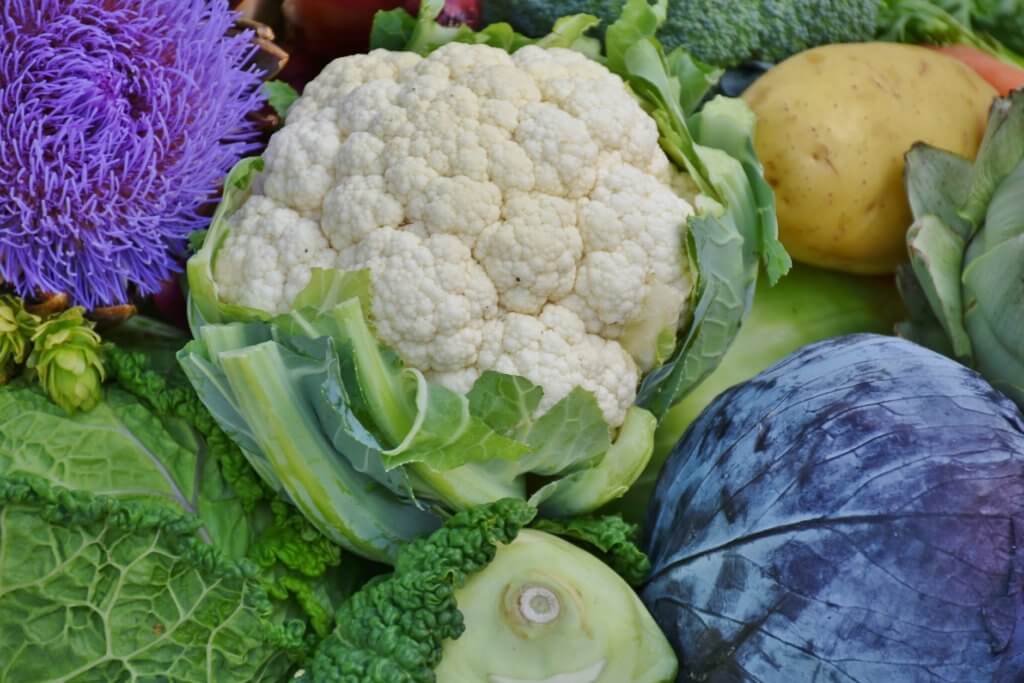
Cauliflower is a very similar plant to broccoli in regards to how you plant, care, and harvest it. It is an excellent source of fiber and multiple B vitamins.
Cauliflower can be planted a little less than one month after the last spring frost.
Like Broccoli, cauliflower can be served raw or cooked with cheese or olive oil.
- Container Size: 5-gallon window box
- When to Plant: One month after the last frost
- How to Grow it: Plant 6-8 inches deep. Plant 12 inches apart.
- Watering Needs: Water Immediately after planting and then two to three times a week for 15 seconds.
- Where to place it: Partial-Sun
- Life Cycle: Annual Plant
- When to Harvest: Slowly pick 60 days after planting
Bonus – EASY Herbs to Grow in Buckets
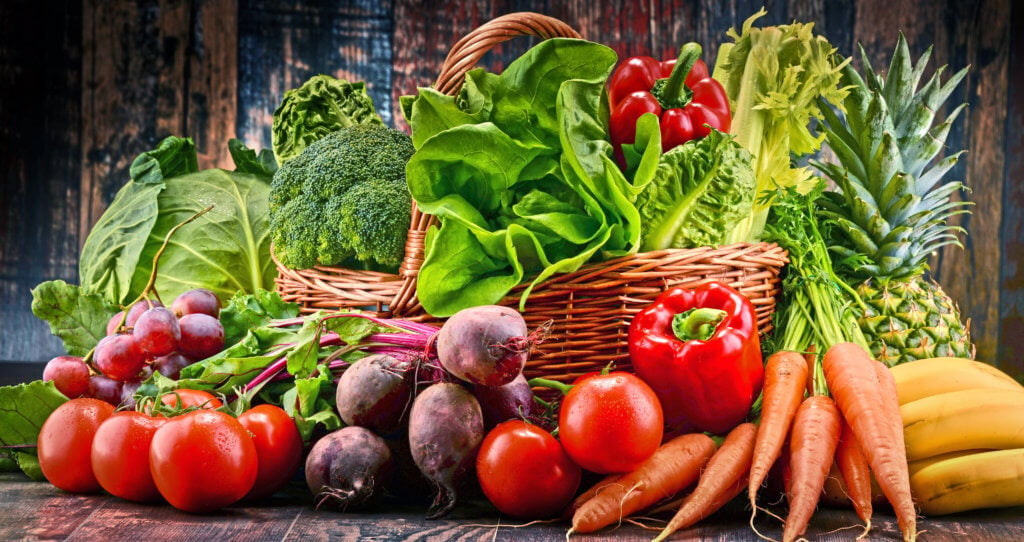
While this article is focused on EASY vegetables to grow in buckets, there are also plenty of herbs I recommend growing in buckets
Below, is a list of 10 EASY Herbs to Grow in Buckets
Bonus – EASY Fruits to Grow in Buckets
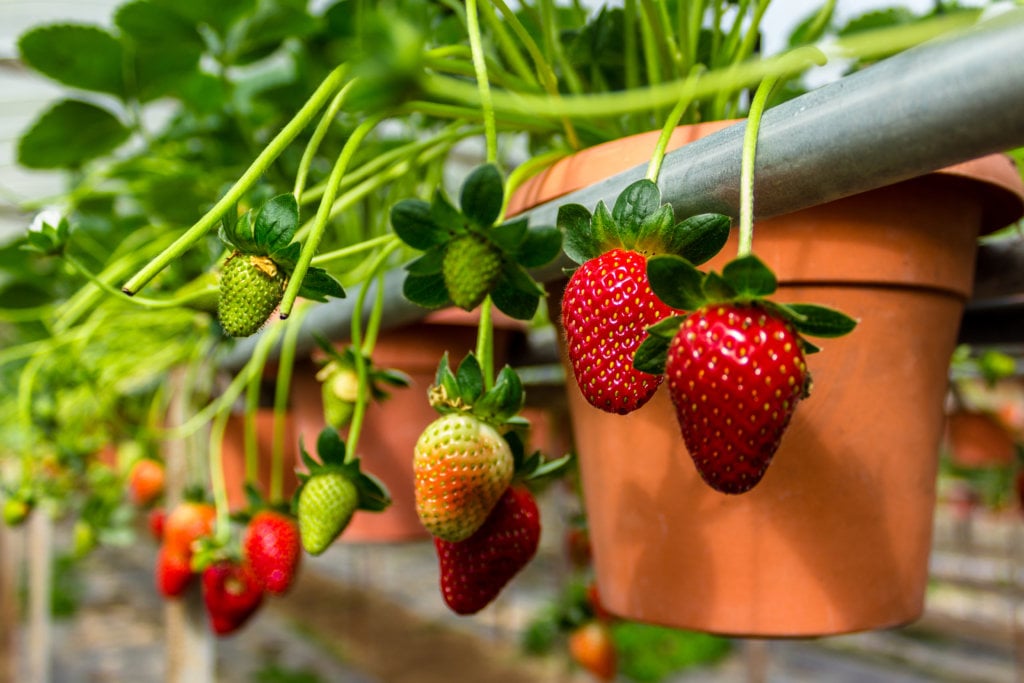
In addition to vegetables and herbs, there are also incredibly EASY fruits to grow in . buckets